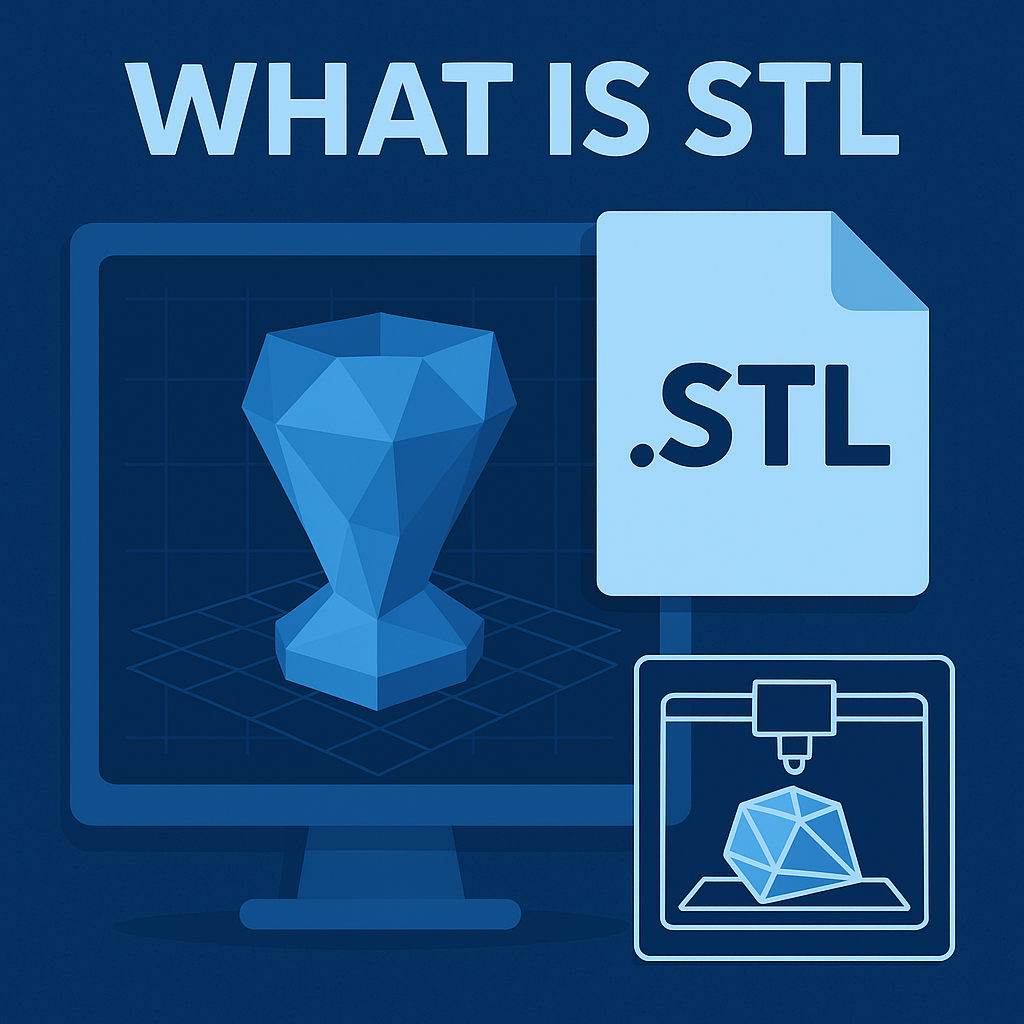What Is STL? The Complete 2026 Guide for 3D Printing, CAD, Engineers & IT Leaders
Updated on November 27, 2025, by Xcitium

As 3D printing technology continues to revolutionize manufacturing, design, engineering, and rapid prototyping, one file format stands at the center of it all: the STL file. Whether you’re working in additive manufacturing, CAD modeling, product design, cybersecurity for industrial systems, or simply exploring 3D printing as a hobby, you’ve probably encountered STL files—and wondered what exactly is STL?
STL files are the most widely used 3D model format in the world, powering everything from hobbyist 3D prints to aerospace engineering prototypes. The STL format is simple, lightweight, and universally supported across nearly all 3D modeling and production tools. Understanding what STL is, how it works, and when to use it helps professionals ensure accuracy, reduce errors, and optimize digital-to-physical workflows.
In this comprehensive guide, we’ll explore what STL means, how STL files are structured, where they are used, their advantages and limitations, and how cybersecurity concerns apply when handling 3D files in modern enterprise environments.
What Is STL? (Simple Definition)
STL (Stereolithography) is a 3D file format used to represent the surface geometry of a 3D object. It describes a model using a collection of connected triangles—called a mesh—that defines the surface of the object without including color, texture, or physical properties.
STL files are the standard format used in:
-
3D printing
-
Rapid prototyping
-
CAD (Computer-Aided Design)
-
CAM (Computer-Aided Manufacturing)
-
CNC machining
-
Additive manufacturing workflows
The STL format was first introduced in 1987 by 3D Systems, the company that pioneered stereolithography 3D printing.
In simple terms:
✔ STL files describe the shape of a 3D object using triangles.
What Does STL Stand For?
There are two commonly accepted meanings:
-
Stereolithography (official)
-
Standard Tessellation Language (informal but widely used)
“Tessellation” refers to the triangular geometry used to represent surfaces.
How STL Files Work (Technical Breakdown)
To understand STL at a deeper level, let’s explore how the format is structured.
STL models are made from:
-
Vertices → 3D coordinates (x, y, z)
-
Facets/Triangles → Made from three vertices
-
Normals → Direction vectors that define the orientation of each triangle
These elements together create a mesh surface.
Two Types of STL Files
1. ASCII STL (Human-readable)
Looks like:
2. Binary STL (More common)
-
Smaller file size
-
Loads faster
-
Not human-readable
Where Are STL Files Used?
STL files are essential in industries such as:
1. 3D Printing
All major slicing software supports STL:
-
Ultimaker Cura
-
PrusaSlicer
-
Simplify3D
-
Lychee
-
Creality Slicer
STL is the universal standard for converting digital designs into printable layers.
2. CAD (Computer-Aided Design)
CAD engineers use STL when exporting models for manufacturing or simulations.
Programs that export STL include:
-
AutoCAD
-
SolidWorks
-
Fusion 360
-
Blender
-
TinkerCAD
-
Onshape
3. Engineering & Prototyping
STL allows accurate shape representation for:
-
Mechanical parts
-
Aerospace components
-
Medical devices
-
Robotics
4. CNC Machining & CAM
Although STEP is preferred, STL is sometimes used in:
-
Mold design
-
Toolpath generation
-
Surface simulations
Advantages of STL Files
✔ Universally supported across all 3D platforms
✔ Lightweight and easy to process
✔ Ideal for 3D printing and rapid prototyping
✔ No complex metadata—just shapes
✔ Can represent very detailed objects
✔ Easy to generate from CAD or 3D scans
Limitations of STL Files
Despite its popularity, STL has several limitations:
❌ No color information
❌ No material properties
❌ No object hierarchy
❌ No units (millimeters vs inches ambiguity)
❌ Does not handle organic shapes as efficiently as newer formats
❌ Large models can produce massive STL files
Because STL only defines shape, modern engineering workflows sometimes prefer:
-
OBJ
-
3MF
-
STEP
-
AMF
STL vs. Other 3D File Formats
Here’s a quick comparison:
| Format | Contains | Best Use |
|---|---|---|
| STL | Geometry only | 3D printing |
| OBJ | Geometry + color | Graphics/animation |
| 3MF | Full metadata | Modern 3D printing |
| STEP | Precise CAD data | Engineering |
| AMF | Colors + structures | Advanced printing |
STL remains the simplest and most widely compatible format.
How to Open STL Files
You can open STL files with:
✔ 3D Modeling Software
-
Blender
-
Fusion 360
-
MeshLab
-
FreeCAD
✔ 3D Printer Slicers
-
Cura
-
PrusaSlicer
-
Bambu Studio
✔ Online STL Viewers
-
viewstl.com
-
Autodesk Viewer
How to Create an STL File
To create an STL:
-
Design a 3D model in CAD or 3D software
-
Fix geometry errors (non-manifold edges, intersecting meshes)
-
Export as .STL
-
Choose binary or ASCII
-
Set your units (mm recommended)
How to Repair or Optimize STL Files
STL files often need cleaning or repairing. Tools include:
-
MeshLab
-
Netfabb
-
Blender
-
Microsoft 3D Builder
-
Meshmixer
Common STL Problems
❌ Holes in the mesh
❌ Non-manifold geometry
❌ Overlapping triangles
❌ Noise from 3D scans
❌ Too many polygons
Fix STL Problems
-
Auto-repair tools (Netfabb, Meshmixer)
-
Manual editing in Blender
-
Reduce polygon count (decimation)
How STL Files Are Used in Cybersecurity
STL files might seem harmless, but in enterprise environments, they can pose risks:
1. Malware Hidden in 3D Files
Attackers can embed malicious code in:
-
Metadata
-
File structure
-
Tampered geometry
2. Intellectual Property Theft
STL files often contain sensitive designs.
3. Supply Chain Manipulation
Altered STL files can produce defective parts—dangerous in:
-
Aerospace
-
Medical environments
-
Automotive manufacturing
4. Unauthorized Modification of Designs
A compromised STL file can alter tolerances or weaken a part.
Examples of STL Usage in Industry
1. Aerospace
Prototyping turbine blades, housings, and brackets.
2. Healthcare
Custom prosthetics and surgical guides.
3. Automotive
Rapid prototypes of components.
4. Cybersecurity/IT
Simulation models for robotics or physical systems.
Best Practices for Working With STL Files
✔ Use binary STL for performance
✔ Always repair models before printing
✔ Validate geometry to avoid printer jams
✔ Use secure storage for sensitive STL files
✔ Convert STL to STEP for engineering workflows
✔ Avoid unnecessary high-resolution meshes
Frequently Asked Questions (FAQ)
1. What is an STL file used for?
STL files are used in 3D printing, CAD, and rapid prototyping to describe the surface geometry of 3D objects.
2. Is STL the best format for 3D printing?
Yes, it is the most widely supported format, though 3MF is gaining popularity.
3. Can STL files contain color?
No. STL does not support colors or textures.
4. Can I convert STL to STEP?
Yes—using software like FreeCAD, Fusion 360, or online converters.
5. Why do STL files get corrupted?
Improper exports, scanning errors, or damaged mesh structures can corrupt STL files.
Final Thoughts: STL Remains the Backbone of 3D Printing
Even with newer formats like 3MF and AMF emerging, STL remains the universal standard for 3D printing and geometry exchange. Its simplicity, speed, and compatibility make it essential for designers, engineers, IT teams, manufacturing professionals, and innovators across every industry.
Understanding what STL is, how it works, and best practices for using it will help you produce more accurate models, avoid printing errors, and ensure secure collaboration in professional environments.
🚀 Strengthen Your 3D Workflows With Zero-Trust Protection
Protect your digital designs, endpoints, and manufacturing environments with real-time threat isolation.
👉 Request a Free Demo: https://www.xcitium.com/request-demo/















